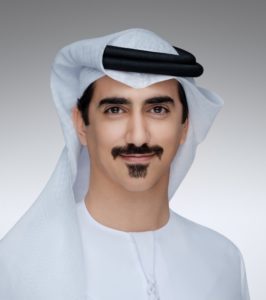Sheikh Dr Majid Sultan Al Qassimi, Director, Animal Development & Health Department, UAE Ministry of Climate Change and Environment, discusses how disruptive technology and the Internet of Things can enhance overall reliability of the cold chain, and the need to invest in training to manage data in such a manner that it paves the way for actionable insights against inefficiencies. Excerpts from the interview with Hannah Jo Uy on the sidelines of the 9th edition of Food Chain (the Middle East Cold Chain Food Safety Conference)…

Sheikh Dr Majid Sultan Al Qassimi, Director, Animal Development & Health Department, UAE Ministry of Climate Change and Environment
Could you comment on the growing impact disruptive technology and the Internet of Things have on the cold chain? How does technology enhance the efficiency and reliability of the food network, particularly in critical temperature-sensitive aspects of its storage and distribution?
When you talk about the Internet of Things, you’re literally looking at every step of a process. You are looking at all the machinery or all the parts of a system or a food supply chain being made available to you, in one way or another, in terms of information. What we endeavour to do with that kind of technology is to understand where the inefficiencies are. With the ability to be omnipresent, if you will, in all the parts of a supply chain or at least have oversight, you can then address the most urgent parts of the inefficiencies you have. This comes down to the bottom line of any company. This comes down to sustainability. This comes down to being able to ensure that there are no faults, and if there are that you address them as soon as possible. And when we are talking about the supply chain for food items, commodities or otherwise, or processing the food items, the critical part is that you have food safety in all parts of the system. Should it fail in any one place, you jeopardise the rest of the chain and the rest of production, and the human cost can be quite significant. With technology today, the Internet and the engagement of the private sector with these kinds of technologies, you’re going to be able to get an incredible amount of transparency in your work and be able to affect it in a much more efficient way, so long as you understand where you need to look.
Are there still bottlenecks in the adoption of these technologies? There are certainly a number of innovations in the market, but people may not be aware of their benefits and perhaps are unwilling to invest in the additional layer of cost.
Absolutely! Let’s be clear, when you’re talking about cost, a lot of this stuff requires upfront expenditure. There’s a lot of investment that needs to go in. I think that in the early stages, where you have only early adopters picking up the technology, the rest of the market is a bit unsure. Because there may be so many offerings of the same promise. When it comes to sensor technology, monitoring and dashboard, what is your yardstick or your measure to be able to gauge one over the other? It’s all new. It’s all different. And unless you have an expert you can fall back on, you fear having invested all that to adopt one technology over another. Now, that really depends on what kind of a company you are. Are you the early adopter type that says, ‘Ok let’s test it; let’s work with the technology to improve it’? Or are you somebody who is going to watch the market and then jump on? Honestly, if you are in the early adopter camp and you do have the flexibility to be able to pick up one of these technologies, you can find incredible gains early on, because your cost can be reduced if you have that efficiency. You can reduce food loss or processing loss and, ultimately, more information can be used. The danger is if you have adopted something and you don’t understand how it works. I mean, it’s not the kind of plug-and-play thing, where you plug it in and it does the work. You have to understand how to read this new information. You have to understand what this new technology affords and what it is you’re trying to do with it, so risk-reward, it’s always the case.
And reading the information in a more comprehensive manner would lead to these actionable insights?
Sure, why not? I think the more we know, the more we can act on. The danger is overload of information. There are people that can barely deal with what their phone is telling them all hours of the day and all days of the week. But for an organisation to identify the critical information that will affect the outcome, their bottom line, the sustainability or safety of their product, that really comes down to understanding what the technology can do for you. So, there is learning involved for the organisation and for the people in the organisation.
And would you say there should be adequate investment towards training programmes in the organisation?
Absolutely! I think this region sometimes can forget that the human equation is critical to having anything work on the ground. You can invest a lot of money in technology, hardware, infrastructure, but if the staff, the team, doesn’t know how to operate, maintain and make the most out of it, your investment is poorly placed. That’s really what it comes down to. If you can have the team trained to the machinery, then you are in a much better position.
Hannah Jo Uy is Assistant Editor at Climate Control Middle East magazine. She may be contacted at hannah@cpi-industry.com.
Copyright © 2006-2025 - CPI Industry. All rights reserved.